When I lived near a golf course in our old house a few miles away, I would spot red foxes running at dusk on the sidewalks. My friend Susan told me about her encounter with a coyote one winter afternoon. She and her black labrador were on the snow covered golf course for a walk when they were approached by a lone coyote. Unwilling to turn his back on the coyote, her dog put himself between her and the coyote and walked them backwards for two miles back to the street; eyes on the coyote the entire time. Susan thinks there was a litter of pups and the coyote was being protective.
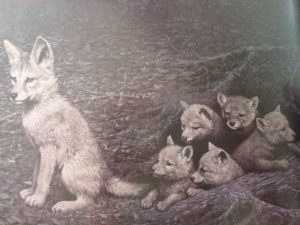
The thing is, I live nine miles west of Boston in a pretty tightly packed suburban area. It’s not farms and huge backyards where I live. Most houses sit on a quarter of an acre.
In this article, Why Wild Animals Are Moving Into Cities, and What To Do About It, by Popular Science, researcher Stan Gertz estimates that more than 2,000 coyotes now make a comfortable living in the Chicago metropolitan area. He notes that “some urban coyotes have even been spotted crossing streets in busy traffic—at the light, looking both ways, just like human Chicagoans.”
But why are they moving to cities?
It’s reasonable to assume that these animals are moving to the city because they’re being displaced by climate change and habitat destruction, but that’s only part of the explanation. One of the biggest factors is that there are more large carnivores than there used to be—primarily, Gehrt says, because of successful conservation efforts. As we make our cities greener, they become more attractive to humans and animals alike. Finally, the relationship between humans and large predators is changing. “We’re now seeing generations of certain carnivores that have had fairly light amounts of persecution by people,” Gehrt says. “They may view cities quite a bit differently than their ancestors did 50 years ago. Then, if they saw a human, there was a good chance they were going to get shot.”
The solution is straight forward Getz notes. Taking away easy meals—garbage and outdoor pet food—can help control issues with any species. In Nevada, for example, bear-proofing garbage cans and dumpsters has helped decrease complaints by two thirds since 2008.

I don’t mind my wild animal neighbors. The coyotes keep the wild rabbits under control. It’s all about a balanced ecosystem, even a suburban one that can feel like a forest. I think we can learn to live with each other and it looks like we should figure out how to get along as they are seemingly not leaving. In Coyote Moon by Maria Gianferrari, readers can understand the coyote’s point of view as a mother works hard to bring food back for her litter of pups. Today, Maria is guest posting with her favorite Top 10 Nature Picture Books. We are also giving away three copies of her new book!
Coyote Moon by Maria Gianferrari, illustrated by Bagram Ibatoulline
How about you? What wild animal sightings have you had and how do you feel about it?
—————–
Hooray for wild animal neighbors! My initial inspiration for writing Coyote Moon was a very close encounter with a coyote when I lived not too far from Mia in Waltham, Massachusetts. The coyote I saw that cold winter’s night in January 2007 was a regal and magnificent creature, more wolfish than coyote. At the time, I lived near a reservoir and a city cemetery that bordered the Charles River where coyotes were known to live. Cemeteries are ideal edge habitats for many creatures, hence my reason for situating the coyote family’s den in a suburban cemetery.
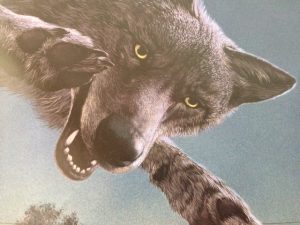
In fact, Coyote Moon is intentionally set in the northeastern U.S. suburbs for two main reasons. First, in the figure of a mother coyote who’s hunting to feed her family, I wanted to show young readers how coyotes can and do live among us, even in cities and suburbs. We can co-exist with these intelligent and amazingly adaptable carnivores as long as we keep them wild by not feeding them. The second reason for setting the story in the northeast was to illustrate how eastern coyotes (also known as coywolves) are coy-wolf hybrids, another phenomenal adaptation of this predator. They’re significantly bigger than western coyote cousins.
Whether you’re a city or suburban dweller, or even if you’re lucky enough to live in the countryside, there are so many ways to observe creatures, even predators like coyotes, who have been able to adapt to urban and residential surroundings. Urban ecology is a fascinating field of study. We can all be urban ecologists in our own neighborhoods! Here are my top ten favorite nature reads.
Top 10 Favorite Nature Picture Books
10.  Now You See Them, Now You Don’t: Poems about Creatures That Hide by David Harrison, illustrated by Giles Laroche
Now You See Them, Now You Don’t: Poems about Creatures That Hide by David Harrison, illustrated by Giles Laroche
A delightful read aloud of lively and humorous poems on a variety of camouflaged creatures—the perfect blend of science and art, with cool, collage illustrations. [picture book, ages 5 and up]
9. Otters Love to Play by Jonathan London, illustrated by Meilo So
Watch the otter pups grow, leap and tumble and wrestle. Meilo So has long been one of my favorite artists, and she renders the otter family with playful beauty. [picture book, ages 4 and up]
8. Build, Beaver, Build! by Sandra Markle, illustrated by Deborah Hocking
A beaver kit’s adventures through the seasons replete with information on beaver life and their habitat. Loved the whimsical illustrations too. [picture book, ages 4 and up]
7. Woodpecker Wham! by April Pulley Sayre, illustrated by Steve Jenkins
Bouncy, onomatopoeic rhyme, and a great guide to a wide variety of woodpeckers (including my one of my favorites, the acorn woodpecker), texturally realistic illustrations by Steven Jenkins. [picture book, ages 4 and up]
6. When Green Becomes Tomatoes by Julie Fogliano, illustrated by Julie Morstad
This is a book I would have LOVED as a child! I read a library copy, and immediately bought one of my own, since I know I’ll re-visit it. Stunning, Zen-like musings and moments of beauty told in a circular journal format. I was reminded both of e.e. Cummings and William Carlos Williams. Julie Morstad’s images add a nostalgic, classic touch. [picture book, ages 6 and up]
5. Prairie Dog Song: The Key to Saving America’s Grasslands by Susan L. Roth & Cindy Trumbore
The authors show the biodiversity of the prairies before the arrival of farmers and ranchers, to its near extinction and recovery through the re-introduction of prairie dogs using a unique multi-layered approach told through song and conversational text. [picture book, ages 6 and up]
4. The Case of the Vanishing Little Brown Bats by Sandra Markle
Written as a scientific mystery, this highly engaging account of scientists racing to discover what’s killing hibernating bats, and their important role in ecosystems, is fast-paced and informative with spectacular photographs. [picture book, ages 6 and up]
3. High Tide for Horseshoe Crabs by Lisa Kahn Schnell, illustrated by Alan Marks
Through layered text, Schnell portrays the annual spawning of horseshoe crabs on the Delaware Bay. It’s a wonderful introduction to these amazing creatures as well as the migratory birds who pass through this shoreline habitat with detailed and realistic illustrations. [picture book, ages 4 and up]
2. Every Day Birds by Amy Ludwig Vanderwater, illustrated by Dylan Metrano
A beginning backyard birder guide written in rhyming verse with bold and vivid cut paper illustrations filled with kid appeal. [picture book, ages 3 and up]
1. Finding Wild by Megan Wagner Lloyd, illustrated by Abigail Halpin
A lush, lyrical and sensory meditation on the natural world with gorgeous vintage-y illustrations. [picture book, ages 4 and up]
Plus one for fun:
How to Swallow a Pig: Step-by-Step Advice from the Animal Kingdom by Steven Jenkins & Robin Page
Such a fun how-to book! A clever approach to animal behavior from nest-building to mimicry to trapping fish, and of course, swallowing a pig, just like a python. [picture book, ages 5 and up]
If you’re lucky, you may see some of these creatures in your very own neighborhoods, no matter where you live!
Happy viewing!!
p.s. From Mia … for another look at how animals live in a suburb, I recommend:
The Fox Diaries: The Year the Foxes Came to Our Garden by Valarie Budayr
Valarie, my partner in crime at Multicultural Children’s Book Day, started her publishing career when a fox mom started a family in her yard! Everyone in her life (and blog) wanted updates on the fox family which resulted in this lovely picture book. [picture book, ages 4 and up]
Coyote Moon 3 Picture Book Giveaway
To win a copy of picture book Coyote Moon, please fill out the Rafflecopter below. We are giving away three copies to three winners! Due to the high cost of shipping, we can only mail to USA.
Check out the other stops for the Coyote Moon Blog Tour:
- FRI 7/15: Pragmatic Mom (+ 3 book giveaway)
- MON 7/18: Nonfiction Detectives
- TUES 7/19: Debtastic Reads
- WED 7/20: Kid Lit Frenzy
- THURS 7/21: Librarian’s Quest
- FRI 7/22: Kidlit411
- MON 7/25: The Reading Zone
- TUES 7/26: Bartography
- WED 7/27: Unleashing Readers
Maria writes both fiction and nonfiction picture books from her sunny, book-lined study in northern Virginia, with dog, Becca as her muse. Maria’s debut picture book, Penny & Jelly: The School Show, illustrated by Thyra Heder, was released in July 2015 (HMH Books for Young Readers); a companion book, Penny & Jelly Slumber Under the Stars, was released in mid-June. Her debut nonfiction book, Coyote Moon, illustrated by Bagram Ibatoulline, will be published by Roaring Brook Press in July and is a Junior Library Guild Selection. In October, Aladdin Books for Young Readers will publish another fiction title, Officer Katz & Houndini: A Tale of Two Tails, illustrated by Danny Chatzikonstantinou. Maria has five additional books forthcoming from Roaring Brook Press, Boyds Mills Press and GP Putnam’s Sons. To learn more about Maria, visit her website: mariagianferrari.com onFacebook or Instagram.
To examine any book more closely at Amazon, please click on image of book.
As an Amazon Associate, I earn from qualifying purchases.
p.s. Related posts:
Nonfiction Picture Books About Nature
Celebrate Tree Picture Books for Earth Day
My Red-Tailed Hawk Babies Learn to Fly
Physical and Developmental Challenge Books for Kids
Why Do Chameleons Turn Colors? It’s not to blend in!
Top 10 STEM Bird Books for Bird-Watching Kids
Top 10 STEM Expository Nonfiction Picture Books
31+ STEM Books to Inspire Girls
For more great non fiction books for kids, please check out my Pinterest board:
Follow PragmaticMom’s board Multicultural Books for Kids on Pinterest.
Follow PragmaticMom’s board Children’s Book Activities on Pinterest.
BEST #OWNVOICES CHILDREN’S BOOKS: My Favorite Diversity Books for Kids Ages 1-12 is a book that I created to highlight books written by authors who share the same marginalized identity as the characters in their books.

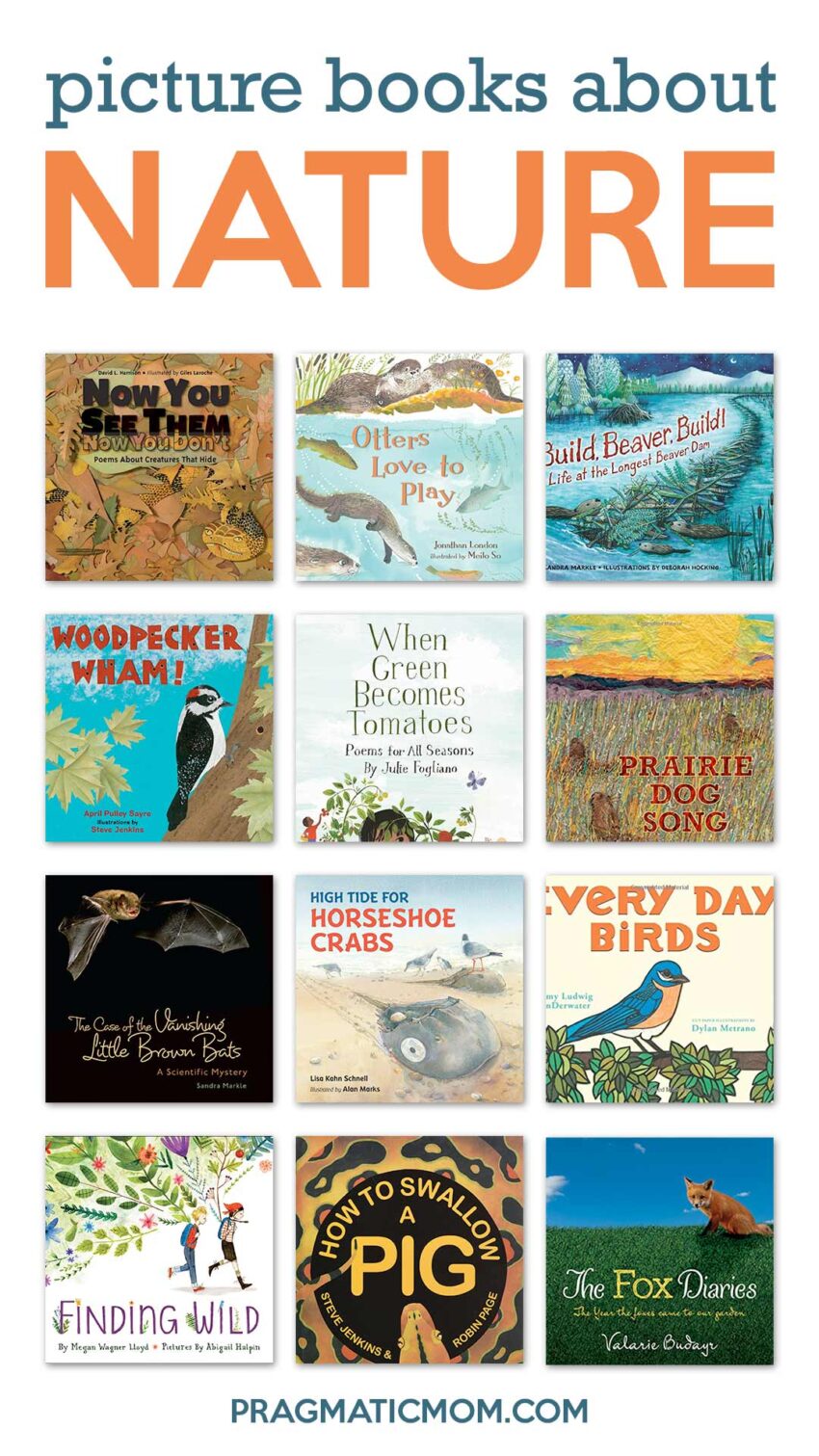

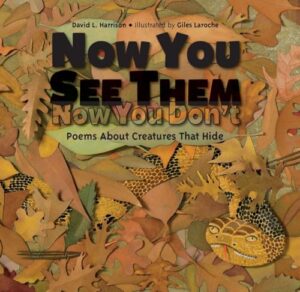

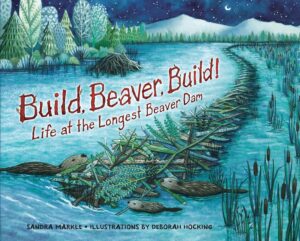
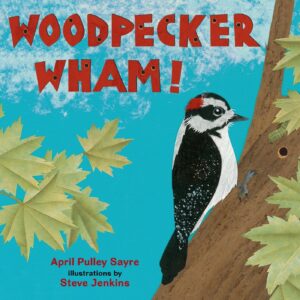

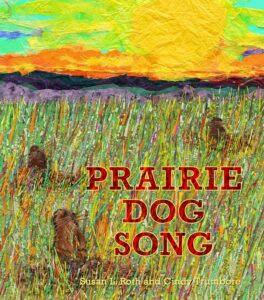

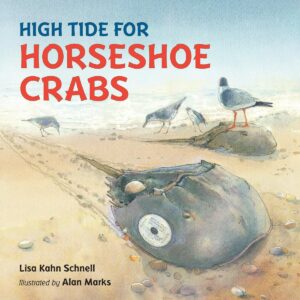


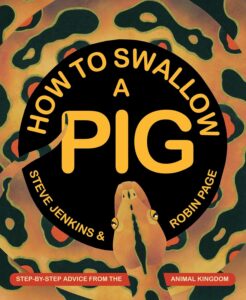








Thanks so much for featuring Coyote Moon here, Mia!!
And hooray for nature picture books & poetry 🙂
It’s such a beautiful picture book Maria!
I love coyotes and I admire them greatly. They are an American success story. As other animals have a smaller range, theirs has grown by leaps and bounds. I’m sorry to say that I have yet to see one! I live near the fifth largest urban park in the country and plenty of people have seen them there (and a few have lost their off-leash small dogs) but I’ve yet to witness one. I keep my eyes open, though!
I come by my love of nature honestly. Growing up in Malden, Ma, I had woods all in back of my house and as a kid I ranged all over those woods. Raccoons were one of our most frequent visitors. The neighbors hated them, but we loved them. We set up our trash so they couldn’t knock it over, but they could get inside and take/eat what they wanted. Loved sitting out on the back porch watching them.
Thanks, Dee–I’m a nature girl too! I grew up in NH and lived in Waltham, MA for many years before recently moving to VA for my husband’s job. I am so homesick for New England :(.
I lived near a farm, and across the street from a maple sugar house–the aroma was wonderful. I was outside all day as a kid, and loved it. That love of nature is what I hope to pass on to kids through my books :).
Where do you live?
I now live in New Orleans! I’m generally not too homesick for New England, except maybe for fall leaves and when it’s just too too hot here. But I don’t miss the cold and snow!
Hi Dee,
You get the beignets now though! We miss Cafe du Monde! My kids would love that place!
Hi Maria,
I like how you didn’t judge the coyote in your book and how it shows that every creature has a place, even in suburbia!
Hi Dee,
I haven’t seen a coyote lately but they are near me too. I’ve seen a beautiful red fox though that seems to make rounds right before dusk in the neighborhood. Like a newspaper delivery boy… the fox is usually roaming at the same time every night!
I’ve never been to New Orleans!! Have you seen bobcats in your area?
I definitely am most homesick of all in autumn (and I’m a fan of snow!).
I am dreaming of sunny, 30 degree days, with bright blue skies (since I loathe heat & humidity!!) 🙂
Hi Maria,
I have trouble with heat and humidity too!
Thanks for including Finding Wild on your list Maria! I’m excited to check out your other recommendations.
I had a few close encounters with coyotes while hiking in California, but while I felt a bit intimidated, they just trotted right past without even looking at me. The main animal we used to see in CA were groups of four to five raccoons walking around and climbing trees in the twilight. And once we found an opossum curled up under the hood of our car!
Here in Virginia we’ve seen lots of red foxes, rabbits, and deer, but, no coyotes, yet, although I know that there are some around here!
You know I LOVE Finding Wild, Megan–it’s gorgeous!
Sadly, I’ve only see a couple of coyotes here, and they were both dead :(. By far, deer are the most common, and we have lots of red foxes. Then it’s the usual suspects: squirrels, groundhogs, an occasional opossum and racoon. And lots of my favorites–birds :). Last year there were black bear sightings–that I would love to see!!
Hi Maria,
We have red foxes, bunnies, squirrels, chipmunks, turkeys, and geese that are out and about during the day. I can sometimes see hawks too.
Hi Megan,
We found a dead opossum in my mother’s backyard in Southern California. It was under shelves of huge potted plants and my mom’s cats were eating it over a long period of probably years. My husband and brother-in-law found it cleaning my mom’s house out 15 years ago, and it was the singular most disgusting thing they talked about.
Hooray for Coyote Moon!
And it’s wild turkeys in my neighborhood. Wouldn’t that be a fun book!
Thanks, Lisa :)!!
I used to see a lot of wild turkeys back in MA. I have seen a few around here, but not nearly as many as Canada Geese. My favorite is the lone great white heron that patrols a nearby pond.
Hi Maria,
The great white heron is such a beautiful bird. I’ve only seen them in Florida though.
Hi Lisa,
We have wild turkeys in Newton, MA. The wild turkeys and geese walk around in the street like the own the place. They stop traffic and strangely never get hit by cars. It’s funny to watch!
We just moved and we now see skunks all the time.
Do you live in a more urban environment, Sarah? They seem to like those best :).
They are cute, until they spray your dog in the face!
Hi Maria,
My dog has avoided skunks so far thank goodness! He likes to chase the wild bunnies in our yard that I suspect got all my pole beans.
Hi Sarah,
I haven’t seen skunks where I live, except when they die on the street so they are here somewhere.
As a child, I remember riding in the car on long stretches of windy, wooded country road and always keeping an eye peeled for interesting wildlife. Coyotes – though not seen often – always seemed so purposeful. They would pause just long enough to assess the car, then trot away at their own pace.
I still get excited when I spot a critter on the roadside or a hawk circling over the highway, and try to slow down or pull over so the kids can see it too. I guess I need one of those old-fashioned “I BRAKE FOR WILDLIFE” bumperstickers! 🙂
I need one of those too, Cathy!!
I never saw coyotes in our rather rural neighborhood as a kid, though they must have been around.
I’m always on the search for creatures, especially hawks on the highway 🙂
Hi Cathy,
I need one of those stickers too! I am constantly braking for squirrels and chipmunks. We have lots of them and they are always running across the street.
Wow, I love all the featured books, but especially Coyote Moon!
Thanks for saying so, Patricia <3!
Hi Patricia,
It’s a beautiful book! You will love it!
Love this collection, especially like the cover of Coyote Moon.
Thanks, Barbara. I think it’s quite stunning too! 🙂
Hi Barbara Ann,
The illustrations really illuminate the coyote and its nocturnal hunting quest.
We have many wild animals in our neighborhood because we live near an urban canyon. I once saw a coyote walking down the middle of the street. We also have foxes, skunks, raccoons, possums, owls, and hawks.
Where do you live, Jennifer? Near San Diego by any chance? I used to love the canyons when we lived there for a year.
Yes, I do live in San Diego. We have many urban canyons, and we take a field trip to one in fourth grade.
We lived in Carmel Valley for a year when my husband was on sabbatical at Scripps & loved it! The flora & fauna is so different from that in the east. I loved all the cacti & hummingbirds too. I didn’t see many coyotes in our neighborhood, but we did yip to them on a camping trip to Mt. Laguna, east of SD, and my husband and colleagues used to see bobcats in the canyons near Torrey Pines & Scripps. Such a beautiful area!
Hi Maria,
My husband grew up in Monterey, California!! We love it there! It’s so beautiful there! I especially like the flora and fauna in Pacific Grove.
Hi Jennifer,
I grew up in Seal Beach, California, in between Huntington Beach and Long Beach. I was amazed how tranquil the canyons are in West Los Angeles … you don’t feel like you are in a city!
Hi Jennifer,
Love your wildlife assortment. We have wild bunnies in our yard. My dog likes to chase them.
I have been hearing about Coyote Moon and I’m really looking forward to reading it. Thanks for this opportunity to win my own copy!
Good luck, Deborah! I hope you’ll like it :)!
Thanks so much for entering Deborah!!!
This is a fantastic compilation of books! I’d love to have a copy of Coyote Moon for our home library.
I’m in the Pacific Northwest, and we have lots of deer, birds, and squirrels. The most remarkable animals are the bald eagles I see everyday flying above my house.
Love Bald eagles & I’m so glad that they’ve made a come back, Christie! They’re so majestic!
Hi Christie,
Wow … how wonderful to see bald eagles in your neighborhood!!
Lots of deer around here
Here too, Lindsay. Tons of them! And vultures when they meet their untimely demise.
Hi Maria,
I would love to spot a vulture!
Hi Lindsay,
We are always so excited when we spot a deer!
The only wild creatures we see are dogs,birds, and cats, although on one of out walks I swear I saw a wolf but I’m not sure…scared us all to death not knowing since we were quite a ways away from him and he took off once we made eye contact.
Wow–a wolf–that would be possible where you live in WA. Maybe a juvenile looking for new terrifory, or a mate.
That’s exciting to spot a wolf!
Hi Renee,
The coyotes have gotten bigger after breeding with the wolves in Canada. I wonder if it was this kind of coyote?!!
I saw two coyotes the morning Lily was born in Massachusetts! I hear about them here on campus all the time, particularly when it hasn’t rained for a while. I think they come looking for water. Where you live, they may come looking for food?
Hi MaryAnne,
I hear of small pets disappearing like dogs and cats. Cats can usually get away but small dogs are prey for the coyotes so the people I know with them keep them inside and watch them carefully if they go outside for exercise.
Wow–where in Massachusetts was it, MaryAnne? And on which campus do you now here them?
Hi Maria,
MaryAnn is in Northern California now in Palo Alto. It’s nice that there are still open spaces there.
The Case of the Vanishing Little Brown Bats sounds really good! I’m adding that one to my list of books to read with my 6 year old. We need picture books with slightly older content, so this one should be perfect! I love the mystery aspect to it.
It’s very well done, Kate! If you ever want any recommendations for older nonfiction, just contact me through my website, mariagianferrari.com 🙂
Hi Kate,
Erica of What Do We Do All Day? wrote this great science picture book list for me: http://www.pragmaticmom.com/2013/07/great-science-books-for-kids/
I hope your son likes it too!
Hi Kate,
I love picture book mysteries too! There are not many of those! Doug Cushman writes great ones that my kids used for 3rd grade mystery writing unit at school.
What an amazing list! Coyote Moon and When Green Becomes Tomatoes look particularly intriguing #kidlitbloghop
Thanks, Svenja!! Are you German? My husband’s from Berlin.
When Green Becomes Tomatoes is a gorgeous book!
Yes, I’m from Hamburg but I live in South Africa.
Hi Svenja,
Why did I think you lived in the UK?
Maybe because of my yahoo.co.uk email address. And I did live in the UK from 2005 to 2011 🙂
Hi Svenja,
That must be it! 🙂
I hope you like them both Svenja!
What an awesome list, as usual. We fell in love with otters after watching some really comical ones in Tampa a few years ago. I also love the idea of when Green becomes Tomatoes.
I love otters too! One showed up last spring at a small pond at my husband’s workplace, but sadly it was just passing through. I’m so glad that they’ve made a come back!
Hi Michelle,
We love otters too! We spotted really agile energetic ones in Florida. They were trying to steal the bait off a docked fishing boat, but who can blame them. They were so entertaining to watch!
We’ve seen opossums in our yard! And, of course, squirrels.
I’m a fan of opposums too, Carol Sue!!
They make me nervous! I think it’s the tail! It’s too rat-like!
I spotted one at dusk by my house too!!! We also have tons of rabbits, squirrels, and chipmunks.
All these books sound wonderful! I’ll check and see if there are any my nature center doesn’t already have.
Where is your nature center, Gwen? By the way, my next fiction picture book is titled Officer Katz & Houndini: A Tale of Two Tails.:)
I love the sound of your next book Maria! What a wide range of picture books you have coming out. I can tell that this one is going to be funny!
Thanks so much Gwen!
I need to read WOODPECKER WHAM…this week we saw a pileated woodpecker on a hike. IT WAS HUGE!!! Bits and pieces of the tree were falling on us as we watched him high above in the tree.
Hi Eric,
I spotted a woodpecker in our dog park. A bunch of us were all gathering below watching it. It is such a great bird to watch!
I love pileated woodpeckers, Eric–they’re HUGE! And so loud! I finally saw my first one in the summer of 2014 in Harper’s Ferry National Park–it was thrilling!
I will have to be on the lookout for a Pileated Woodpecker. I saw one with a red beck that was pretty small.